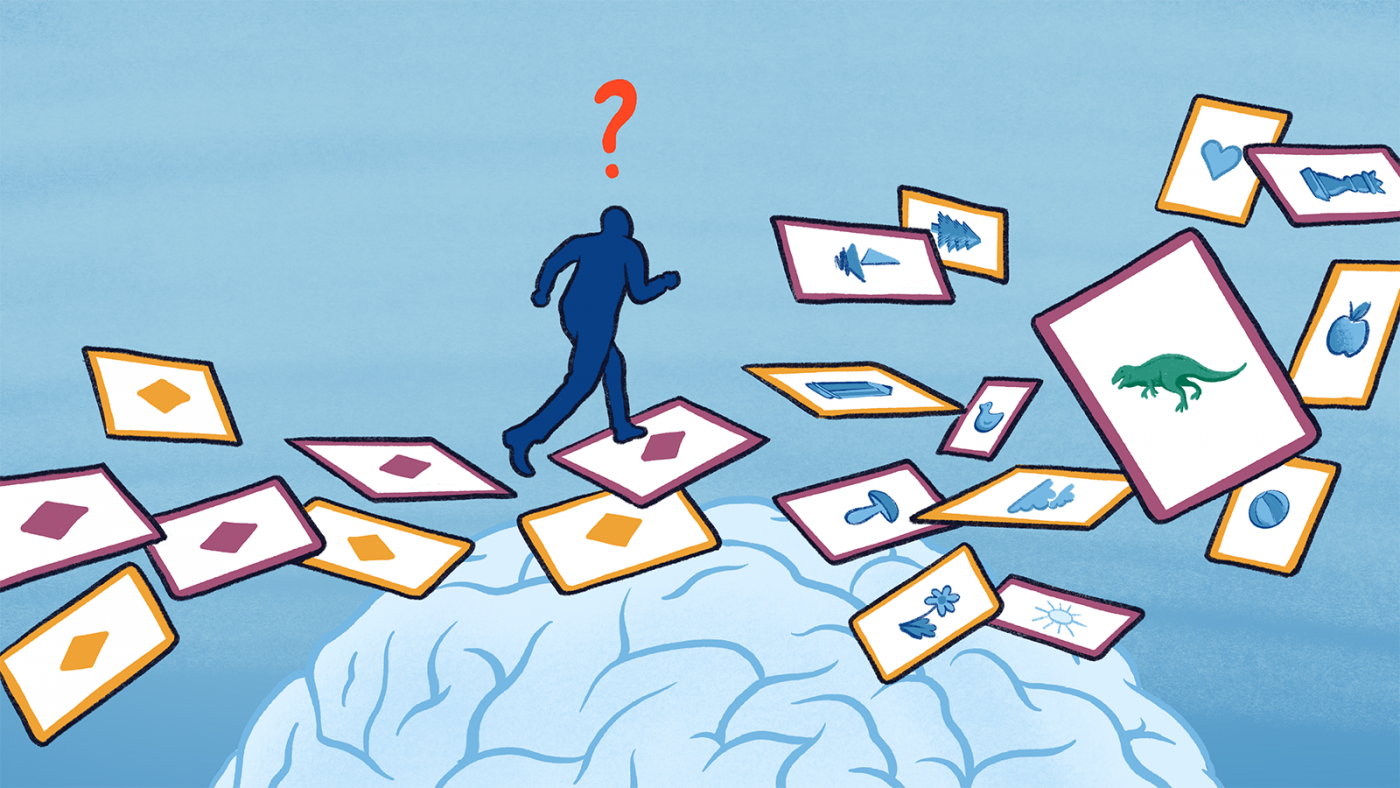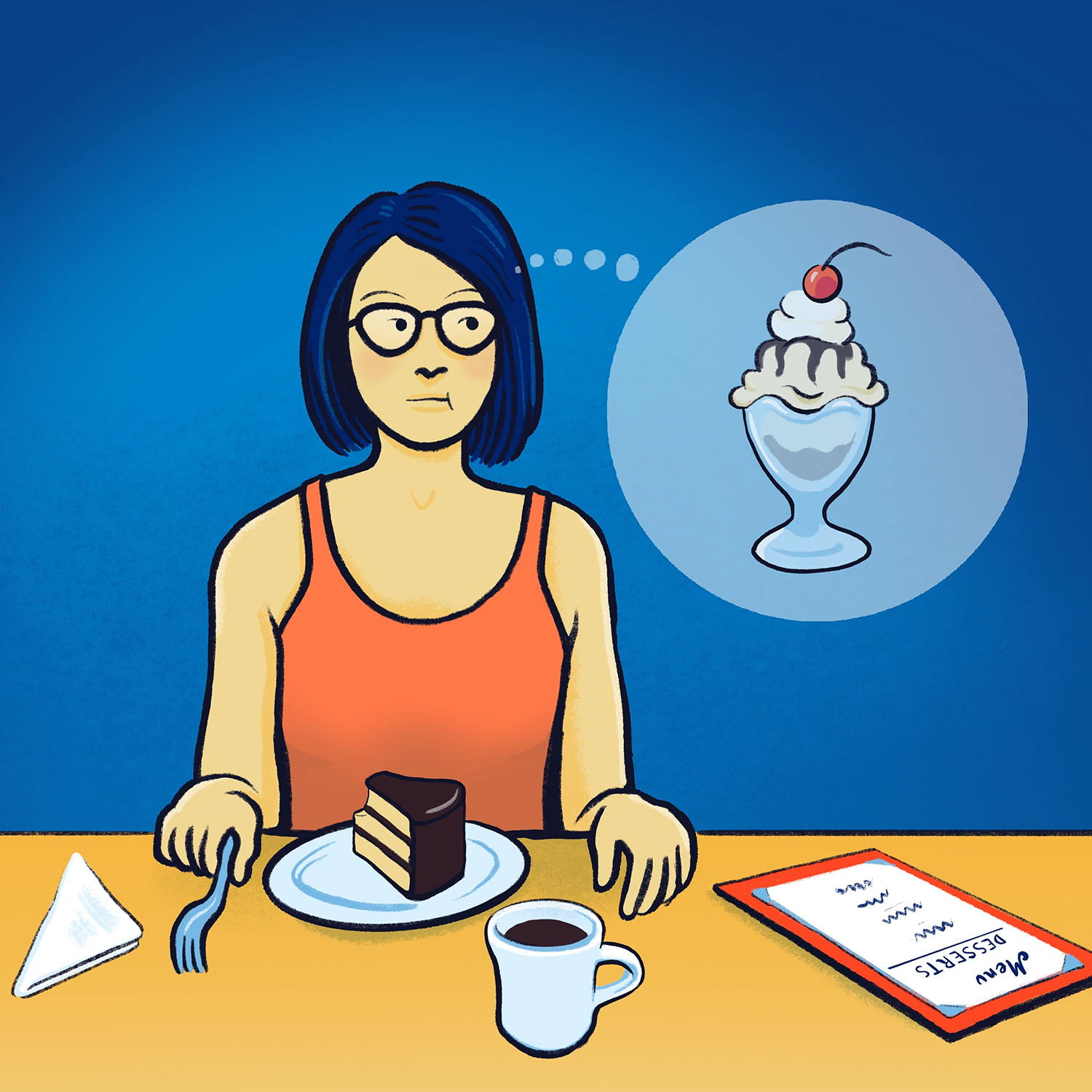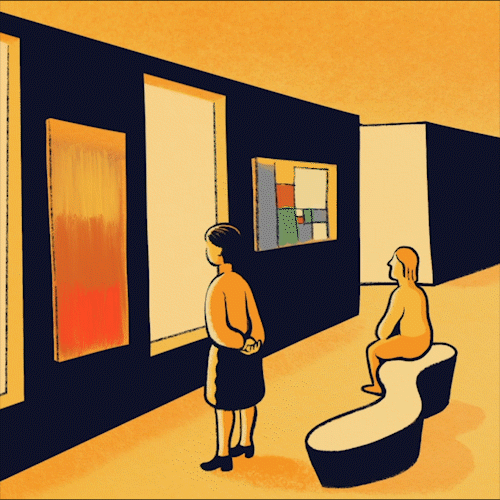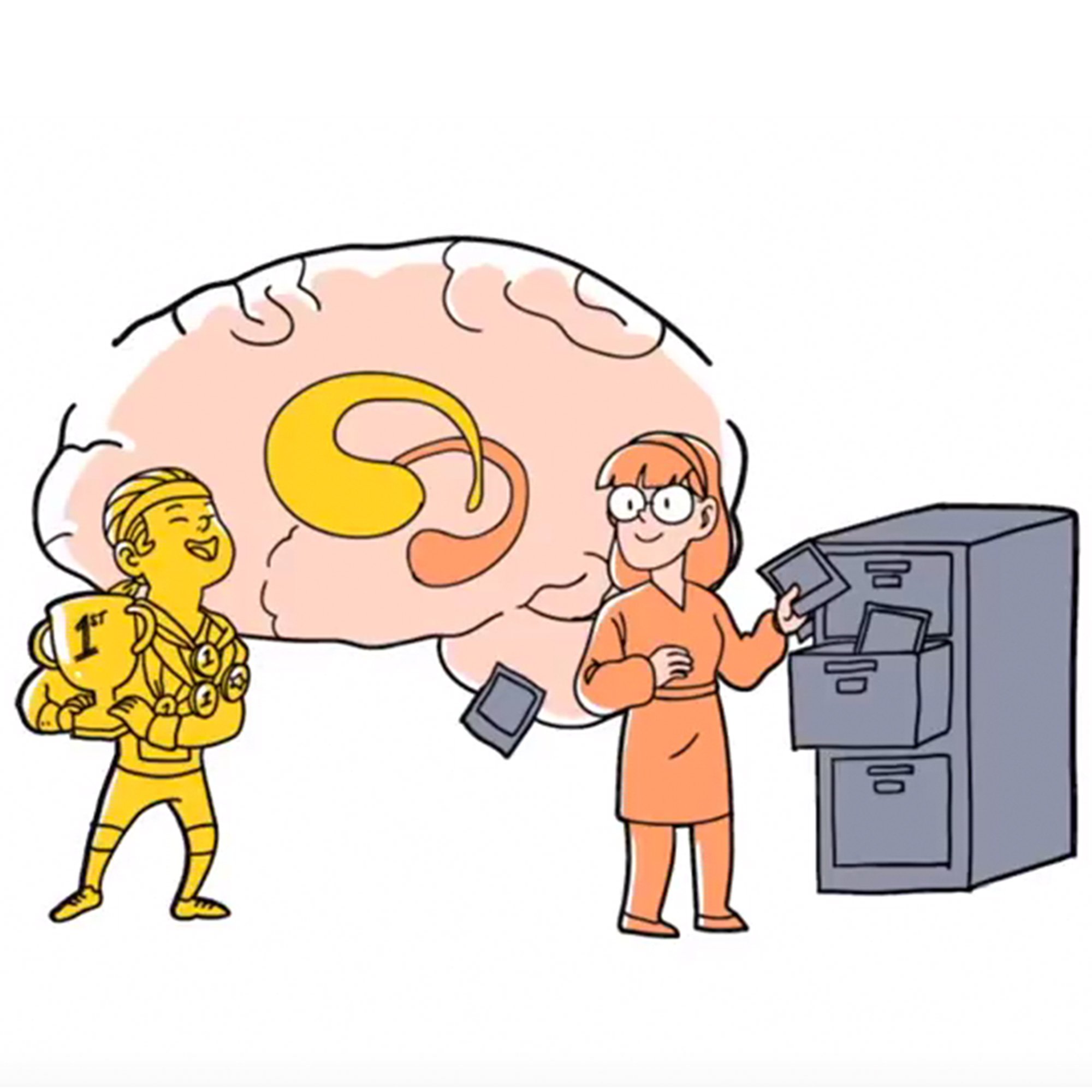Jonathan Nicholas, a graduate student at Columbia’s Zuckerman Institute, wanted to know how our memories influence the choices we make every day, from selecting a beverage at a cafe to deciding whether to accept a new job. When do we make such decisions based on an explicit memory for a single, specific experience from our past? When do we rely on an implicit sense of what is best, based on assessing many accumulated past experiences? Researchers have long known that these two kinds of memories are different and reside in different parts of the brain. Nicholas wanted to know how the brain selects which kind of memory to use when making a decision.
A member of the Shohamy lab, Nicholas employed a simple card game, working with his advisor, Daphna Shohamy, PhD, and Nathaniel Daw, PhD, a colleague at Princeton University. In the game, players picked cards, round after round, to earn money. The cards had different colors, and over time the players learned that each color was associated with a different monetary value.
The researchers then injected uncertainty into the game: The value of each color sometimes changed over the rounds.
The players had one more source of information to help them. Each card also featured a unique image. Each image was always worth the same amount and could reappear once more on a future choice, making it a solid source of information.
As volunteers played the game, Nicholas used computational models to track people’s uncertainty at any given moment. These models incorporated both the parameters of the game and the choices made by players.
He found that when the values associated with color changed less often and were thus less uncertain, people relied more on color to make their decision. Researchers call this incremental learning, and it relies on building up, bit by bit, a store of memories.
When the values associated with color changed more often and were more uncertain, game players tended to rely more on images to make decisions. They used episodic memory, pegged to a single noteworthy occurrence.
“When you can opt between a one-time past experience and a summary of many experiences for making decisions, your brain turns to whichever channel it deems more trustworthy,” said Nicholas.
“To crack open the mystery of how people make decisions, we need experiments like these and computational approaches to behavior, so that we can really tease apart the specific contributions of different internal thoughts to behavior,” said Dr. Shohamy, Kavli professor of brain science and associate director of Columbia’s Zuckerman Institute. “We know that people are really good at making up stories about how they think they are making decisions, but we are developing tools to quantify what kinds of decisions people are making, and why.”
To learn more about this investigation into decision-making, please read the paper, which was published in eLife.



